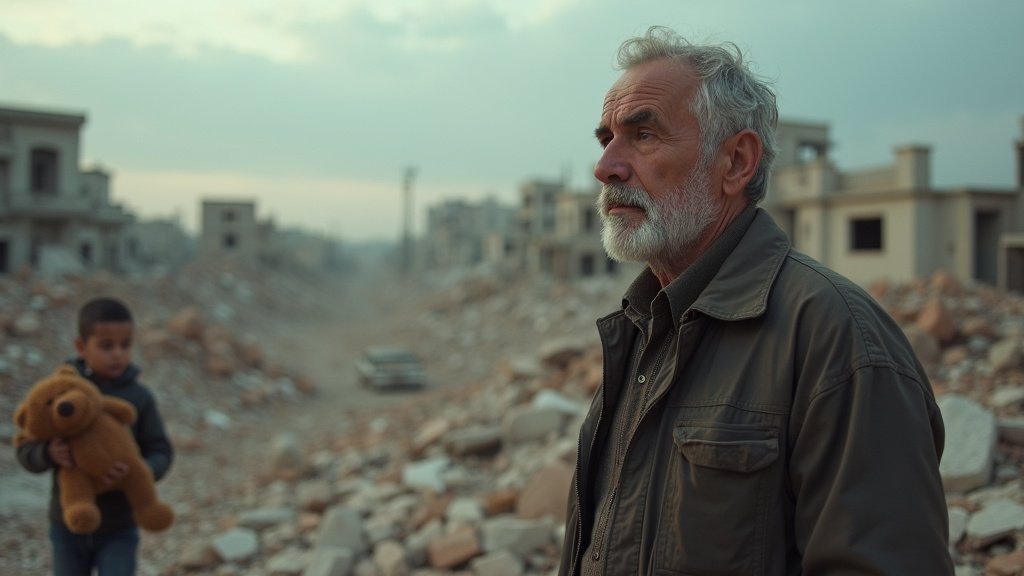GAZA STRIP – Tens of thousands of displaced Palestinians have begun returning to their homes across the Gaza Strip following the implementation of a United States-brokered Gaza ceasefire. The agreement, which took effect on Friday, October 10, 2025, has seen Israeli forces withdraw from major urban centers, allowing a mass movement of civilians back towards areas devastated by nearly two years of conflict. This developing situation is now a trending topic of global news, with international attention focused on the immediate aftermath and the prospects for long-term stability following the Gaza ceasefire.
A Fragile Respite: The Gaza Ceasefire and Withdrawal
The Gaza ceasefire marked the first significant pause in hostilities for inhabitants of the devastated territory since March. Israeli troops began pulling back to agreed-upon positions during Friday morning, signaling a de-escalation that permitted the flow of returnees. This withdrawal from key urban areas, including Gaza City and Khan Younis, is part of the initial phase of a broader peace plan aimed at ending the protracted Israel Hamas conflict.
The Bittersweet Return to Ruined Homes Gaza
As the fighting ceased, long columns of exhausted Palestinians embarked on journeys north, many on foot, along the coastal road towards Gaza City, the territory’s largest urban area. These returning residents, many of whom have been displaced multiple times, now face the stark reality of immense destruction. While some expressed relief that their homes were still standing, others discovered that their residences had been reduced to rubble or sustained severe damage. The scale of devastation is profound; entire neighborhoods have been leveled, and the landscape is marked by debris. Many are returning to find little more than dust and the foundations of their former lives, highlighting the urgent need for Gaza reconstruction.
Unprecedented Destruction: A Landscape of Rubble Following the Gaza Ceasefire
The conflict has left an indelible mark on Gaza’s infrastructure and housing. Reports and satellite imagery indicate that a significant majority of buildings have been damaged or destroyed, with some analyses suggesting that between 70% and 90% of housing stock has been affected. The destruction extends beyond residential buildings to include schools, hospitals, and essential infrastructure, creating an immense humanitarian challenge for reconstruction efforts, which experts estimate could take until 2040. The United Nations Satellite Centre (UNOSAT) reported in September 2025 that two-thirds of all structures in the Gaza Strip had sustained damage, totaling over 163,000 ruined homes Gaza. This level of destruction has been described by UN officials as unprecedented since World War II, underscoring the importance of a lasting Gaza ceasefire.
Hostage and Prisoner Exchange: The Core of the Gaza Ceasefire Deal
Central to the Gaza ceasefire agreement is a significant hostage exchange. Hamas is expected to release approximately 48 hostages, including 20 believed to be alive, in exchange for a substantial number of Palestinian prisoners. The terms involve Israel freeing 250 Palestinians serving long-term sentences and an additional 1,700 detainees held since the war began. The International Committee of the Red Cross is facilitating this complex exchange, a critical step in the US-led peace initiative and a key component of the Gaza ceasefire.
Humanitarian Crisis Gaza and Uncertain Future Amidst Gaza Ceasefire
As Palestinians begin their arduous journey home, the United Nations and humanitarian organizations are preparing to scale up aid deliveries, though significant challenges remain. There are urgent calls for unimpeded access through all crossings to prevent famine and address the widespread injuries, malnutrition, and inadequate shelter conditions, a critical aspect of the ongoing humanitarian crisis Gaza. The scale of human suffering is immense, with thousands of aid workers killed during the conflict. The hope for Palestinian return is tempered by the reality on the ground.
Looking ahead, significant questions loom over the durability of the Gaza ceasefire and the future governance of Gaza. While US President Donald Trump expressed optimism about the deal holding, Hamas has rejected any notion of foreign guardianship, insisting that Gaza’s governance is an internal Palestinian matter. Israeli Prime Minister Benjamin Netanyahu has also signaled that Israeli forces may remain in Gaza until Hamas is disarmed, hinting at the possibility of renewed conflict if terms are not met. The current situation represents a moment of tentative relief but is underscored by the immense task of rebuilding and the ongoing political complexities, impacting prospects for Middle East peace. This news is rapidly trending globally as the world watches Gaza’s next steps following the fragile Gaza ceasefire.
Further reading: Related News on Google




